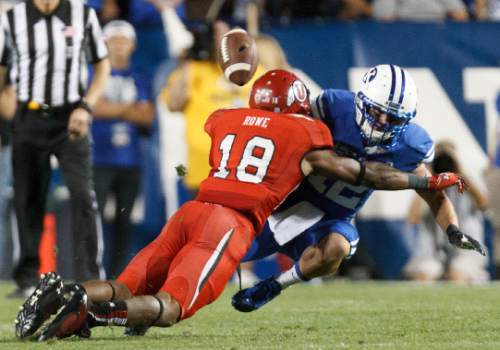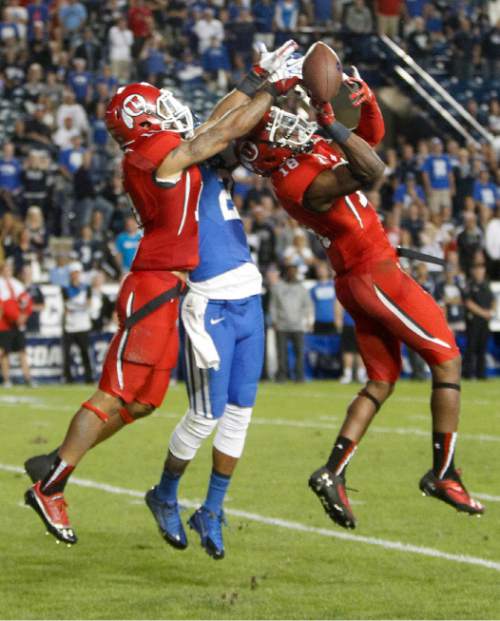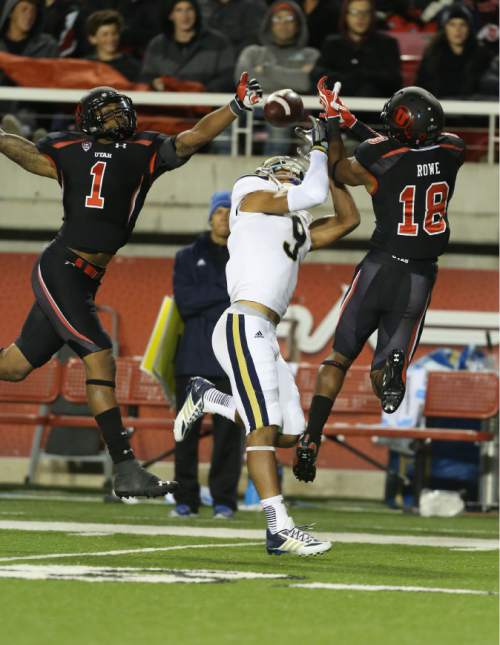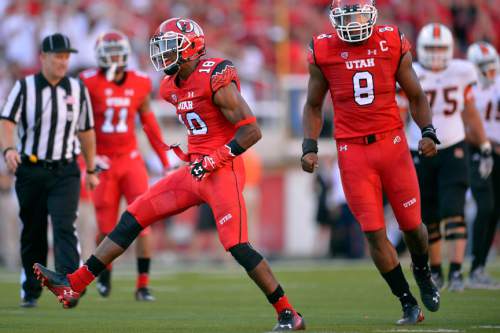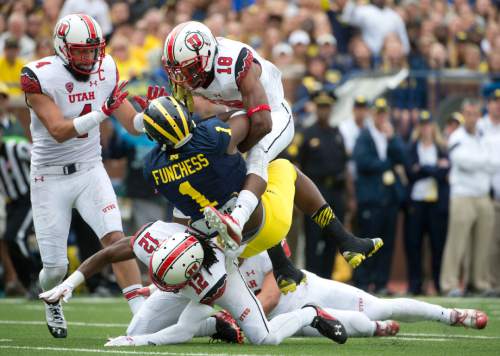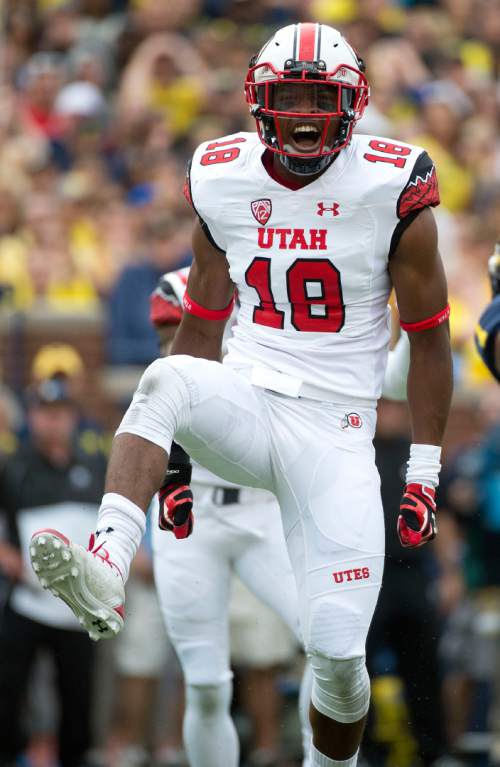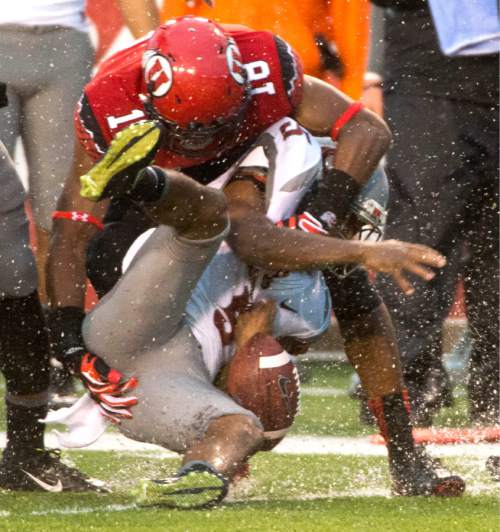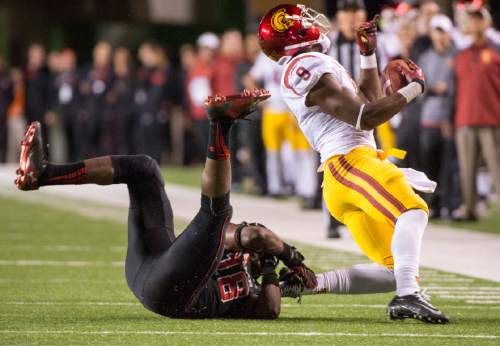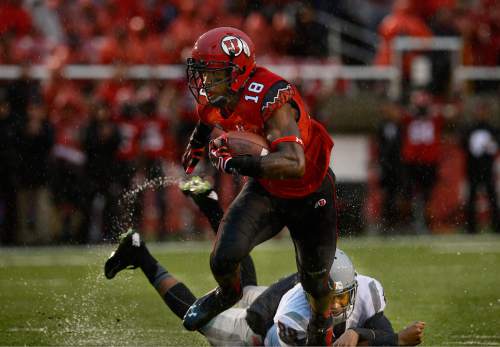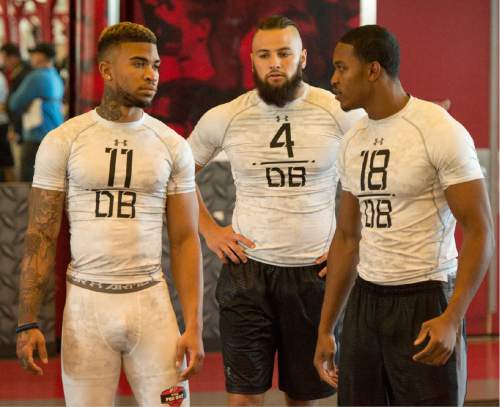This is an archived article that was published on sltrib.com in 2015, and information in the article may be outdated. It is provided only for personal research purposes and may not be reprinted.
Stan Labay was one of the first aboard the Eric Rowe bandwagon, long before it was fashionable to rave about Rowe's plus frame or his disruptive traits or his zone instincts.
Rowe was "more or less a basketball player" heading into his junior season at Klein High, said Labay, then Klein's head football coach. In pads, he might've weighed 170 pounds.
But he was an outstanding athlete — a defensive terror on the basketball court — and once he hit the weights, his abilities as a defensive back quickly became apparent.
What's more, Labay said, he was willing.
"He would do what you told him to do. He was not one of those 'I,' 'me' guys that worried about stats or any of that."
When Rowe helped lead the Bearkats to the Texas 5A state semifinals in 2009, the bandwagon picked up another early passenger: Utah safeties coach Morgan Scalley.
Scalley said Rowe sometimes looked "lackadaisical" at practices because of his easygoing demeanor, but "When I watched the film, I loved it. He became my No. 1 priority."
Rowe committed to the U. despite late interest from Texas A&M and TCU — who he watched throttle the Utes 47-7 during his official visit — and earned freshman All-American honors. And yet, over the next few years, the Rowe bandwagon made few pickups
He started 45 games and finished with the third-most pass breakups in school history (34). But some fans grew frustrated with Rowe for who he wasn't: Robert Johnson.
"We were spoiled at Utah," said Scalley, himself a second-team All-American free safety in 2004. "... I think people had in their minds that free safeties should be able to just do what Robert did. Robert was arguably the best free safety ever to play football at the University of Utah."
A fifth-round pick of the Tennesee Titans in 2010, the ball-hawking Johnson had 13 interceptions in three seasons, compared to Rowe's three picks in four. And the things Rowe excels at — tackling, taking correct angles, versatility — don't make the type of highlight reels that fans typically watch.
Utah moved Rowe to corner as a senior, as they had the year prior with eventual Oakland Raiders fourth-rounder Keith McGill, and Rowe emerged as a steady presence. His 13 pass breakups were the third-most in a season by a Ute.
Still, few would have thought that in the build-up to the NFL Draft, it would be Rowe, and not all-everything defensive end Nate Orchard, who seemed sure to be the first Ute taken.
Although his profile is not that of the usual postseason riser — buried on the depth chart, playing in a lesser league, etc. — Rowe's versatility first seemed to dawn on NFL teams in the buildup to the Senior Bowl in Mobile, Ala.
And if his 261 tackles hadn't caught their attention, he gave them more numbers to appreciate at the NFL Combine, where he ranked among the top five of 22 free safeties in every category.
His agent, Tony Paige, told The Tribune then: "He could go in the second round." But agents exaggerate, right? Media outlets like CBS Sports and Bleacher Report still had Rowe pegged as a third- or fourth-rounder.
It wasn't until early April that CBS Sports' Dane Brugler stepped out on a limb and suggested the Philadelphia Eagles — represented by head coach Chip Kelly at Utah's pro day — might take Rowe with the No. 20 pick.
Rowe has since visited with Baltimore, Miami, Phoenix and Detroit and become among the draft's most buzzed-about players.
CBS Sports' senior NFL columnist Pete Prisco said he believes Rowe "has the skills to be a Pro Bowl-caliber safety on the next level." Colleague Rob Rang thinks the Pittsburgh Steelers might take him 22nd. Others see New Orleans (No. 31) or Super Bowl champion New England (No. 32) as possible landing spots.
NFL Network draft analyst Mike Mayock told The Tribune last week that "about half the league thinks he's a third-round pick." For the other half, there's a "conversation" about whether he belongs in the latter half of the first round.
It helps that it's regarded as a thin draft at safety behind Alabama's Landon Collins and Arizona State's Damarious Randall.
Scalley said Rowe's advantage is that as more offenses try to spread teams out, a nickel who functions as a safety/corner hybrid can be invaluable.
"That's exactly, I think, what teams are seeing in Eric. A 4.4 40 kid that can run with your top wide receiver and play in the box."
And Rowe has what Labay saw in him as a 170-pound wing player who was rebranding himself as a football player — a National Honor Society member then, a graduate of Utah's business school now.
He puts his head down, and he works.
"He's not just going to sit back and use his athleticism as a tool and say, 'Oh, I'm a good athlete. I can play with anybody.' That's the part that I think is sometimes harder to measure," Labay said.
Twitter: @matthew_piper —
Utah DBs in the NFL Draft
1960 • Larry Wilson, No. 74 overall
1963 • Jerry Overton, No. 202
1964 • Richard Tate, No. 130
1968 • Jerome Lawson, No. 251
1971 • Norm Thompson, No. 17; Billy Hunter, No. 394
1981 • Jeff Griffin, No. 61
1986 • Erroll Tucker, No. 122
2001 • Andre Dyson, No. 60
2003 • Antwoine Sanders, No. 258
2007 • Eric Weddle, No. 37
2009 • Sean Smith, No. 61; Brice McCain, No. 188
2010 • Robert Johnson, No. 148; R.J. Stanford, No. 223
2011 • Brandon Burton, No. 139
2014 • Keith McGill, No. 116



